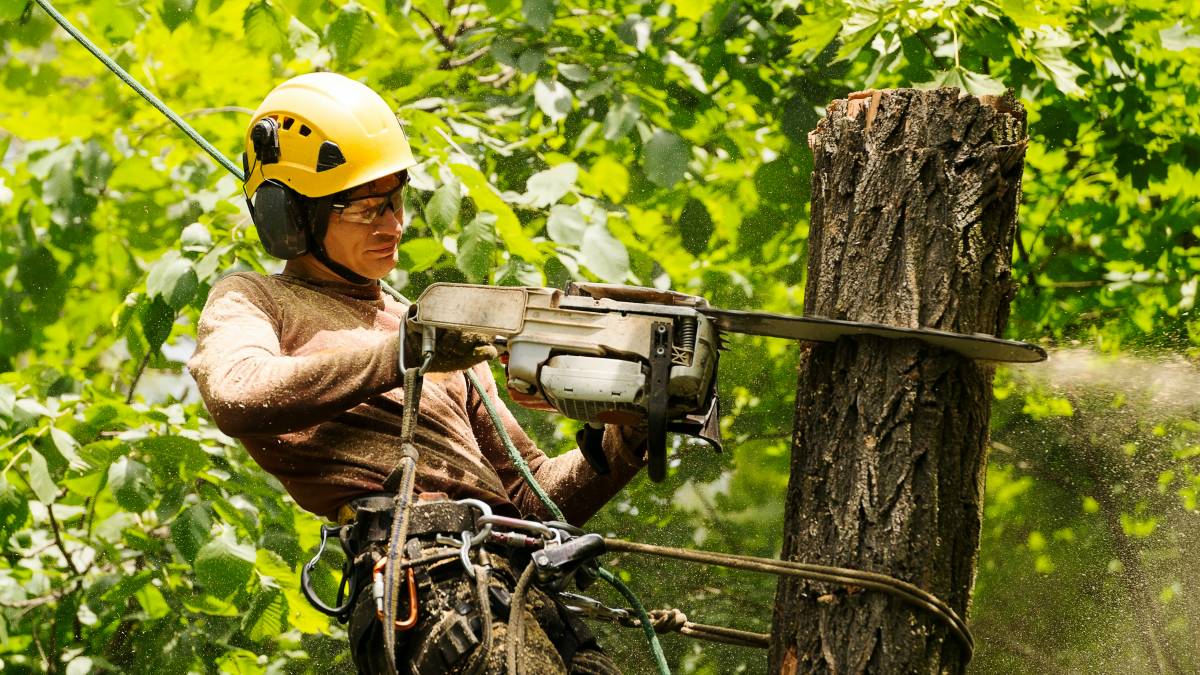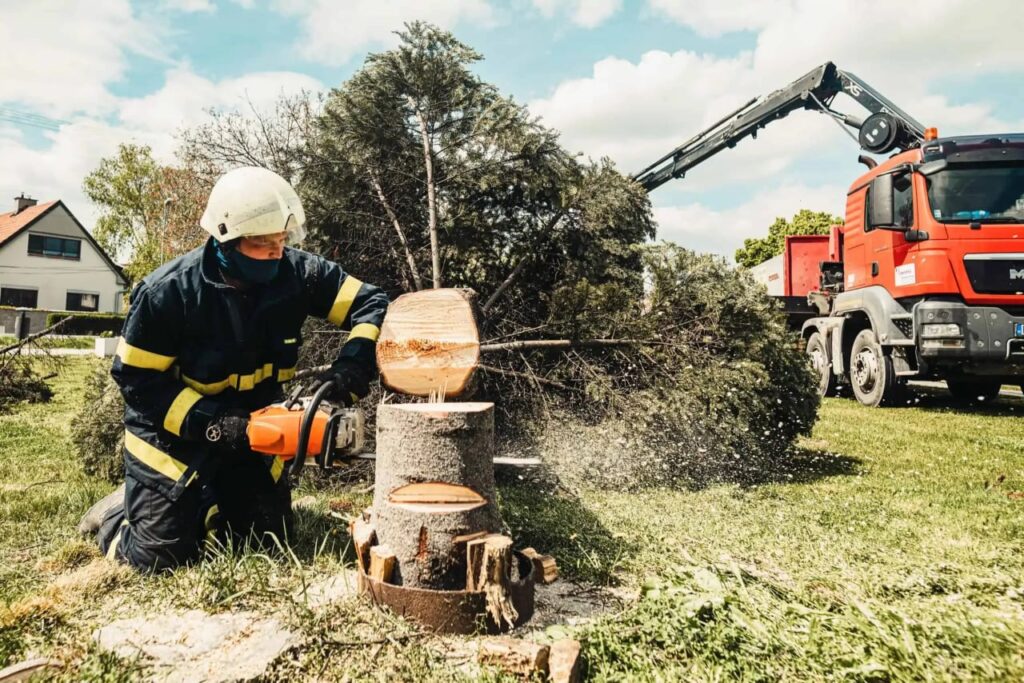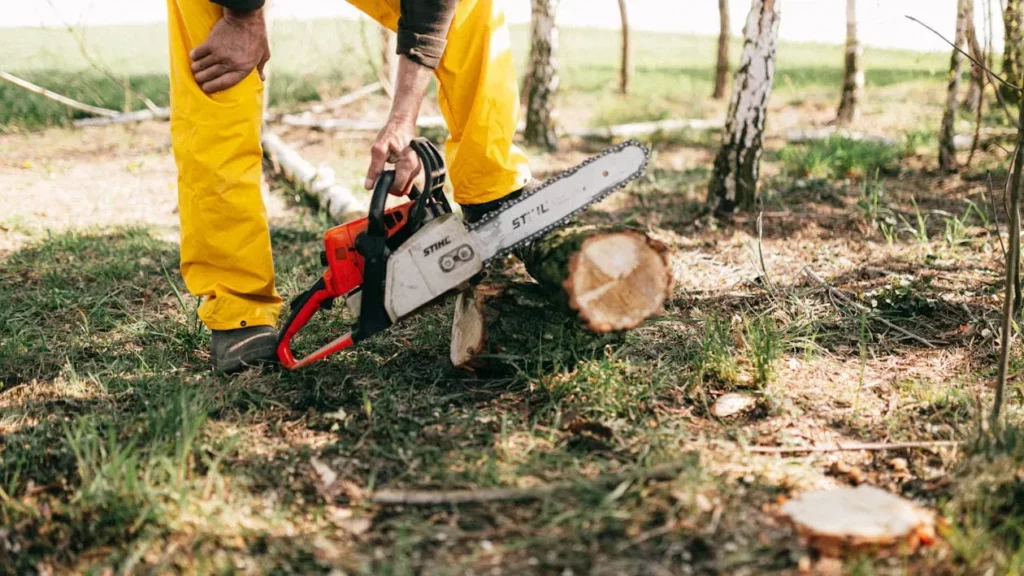
In Sydney, tree removal services are essential for maintaining the safety and aesthetics of properties. Whether it’s due to disease, damage, or the need for space, there are various reasons why trees may need to be removed. Understanding the process and factors involved in tree removal is crucial before making any decisions.
This comprehensive guide will provide you with all the information you need regarding tree removal services in Sydney.
Understanding Tree Removal Services
Tree removal involves the complete removal of a tree from its location. This process requires the use of specialized equipment and expertise to ensure safety and efficiency. While tree removal may seem like a straightforward task, there are several factors to consider before initiating the process.
When considering tree removal, it is essential to understand the impact it may have on the surrounding ecosystem. Trees provide habitat for various wildlife, contribute to air quality, and offer shade and aesthetic value. Therefore, before deciding to remove a tree, it is advisable to consult with an arborist to explore alternative solutions such as pruning or tree preservation. Learn more about what to expect regarding tree removal costs.
What is Tree Removal?
Tree removal is the process of eliminating a tree from its current environment. It can involve cutting down the tree and removing it from the property, including the stump and roots. It is crucial to hire professional tree removal services to ensure the task is performed safely and effectively.
Professional tree removal services employ certified arborists who assess the tree’s health and structural integrity before determining the best course of action. They use specialized equipment such as cranes, chainsaws, and rigging tools to safely dismantle and remove trees, minimizing the risk of property damage or personal injury.
Why is Tree Removal Necessary?
Tree removal becomes necessary for various reasons. Trees that pose a threat to property or human safety due to disease, decay, or structural issues may need to be removed. Additionally, trees that obstruct construction projects or impede the growth of other plants may also warrant removal.
It is important to note that tree removal should be a last resort after exploring all possible options for tree preservation. In cases where removal is unavoidable, hiring professional tree removal services ensures the task is carried out efficiently and with minimal impact on the surrounding environment.
Factors to Consider Before Tree Removal
Before initiating the tree removal process, several factors need to be evaluated to ensure the decision is made with care and consideration.
One crucial aspect to consider is the environmental impact of removing a tree. Trees play a vital role in the ecosystem by providing oxygen, absorbing carbon dioxide, and offering habitats for various wildlife. Removing a tree without proper consideration can disrupt the local ecosystem and biodiversity. It is essential to assess if there are any alternative solutions that could preserve the tree while addressing concerns about safety or aesthetics.
Assessing the Health of the Tree
Determining the overall health of the tree is essential. An arborist can assess the tree’s condition, looking for signs of disease, decay, or infestation. In some cases, measures such as tree pruning or treatment may be sufficient to restore the tree’s health. However, if the tree is beyond saving, tree removal may be the only option.
Additionally, considering the age of the tree is important when assessing its health. Older trees may naturally show signs of aging, such as dead branches or a decline in overall vitality. Understanding the life cycle of the tree species in question can help determine if the tree is at the end of its natural lifespan or if there are underlying issues affecting its health.

Evaluating the Risk to Property
The proximity of the tree to property structures, such as buildings and power lines, should be examined. Trees that pose a risk of falling onto structures or causing damage during severe weather conditions may need to be removed to ensure the safety of the property and its occupants.
Furthermore, assessing the root system of the tree is crucial in determining the risk it poses to nearby structures. Trees with shallow root systems or roots that are encroaching on foundations, sidewalks, or underground utilities may present a greater risk of causing damage and may need to be addressed promptly.
Considering the Legal Implications
Tree removal may require obtaining permits or complying with local regulations. Before any tree removal takes place, it is crucial to check with local authorities to understand the legal requirements. Failure to comply with these regulations may result in fines or other penalties.
It is also important to consider any conservation or preservation efforts in the area that may impact the decision to remove a tree. Some regions have designated protected tree species or areas where tree removal is restricted to maintain biodiversity and natural habitats. Understanding and respecting these regulations is essential in making an informed decision about tree removal.
The Tree Removal Process
The tree removal process is a meticulous and well-planned operation that requires expertise and precision to ensure safety and efficiency.
Before embarking on the tree removal journey, it is essential to understand the significance of trees in our ecosystem. Trees provide oxygen, improve air quality, offer shade, and support wildlife habitats. Therefore, the decision to remove a tree should not be taken lightly, and efforts should be made to replant or compensate for the lost tree.
Initial Assessment
During the initial assessment phase, the arborist not only evaluates the tree’s health and structural integrity but also considers environmental factors such as nearby power lines, buildings, and the tree’s proximity to other vegetation. This thorough evaluation ensures that the removal process is tailored to the specific characteristics of the tree and its surroundings.
Preparation for Removal
Prior to the commencement of the removal, a detailed plan is put in place to address potential risks and challenges. This may involve obtaining permits, coordinating with utility companies, and establishing an emergency response protocol. Additionally, the team will conduct a thorough site cleanup to remove any debris or obstacles that could impede the removal process.
The Removal Process
As the removal process unfolds, skilled arborists utilize a combination of cutting techniques, rigging methods, and equipment to safely dismantle the tree. Each section of the tree is strategically cut and lowered to the ground to minimize impact and ensure the safety of nearby structures. Throughout the operation, communication among team members is crucial to coordinate movements and ensure a seamless removal process.
Once the tree has been successfully removed, the focus shifts to stump removal or grinding. This final step not only enhances the aesthetics of the landscape but also prevents potential regrowth and eliminates tripping hazards. The remnants of the tree are then recycled or repurposed whenever possible to minimize waste and promote sustainability.

Choosing a Tree Removal Service in Sydney
Choosing the right tree removal service is essential to ensure the success and safety of the operation. Consider the following aspects when selecting a service provider:
Tree removal is a task that requires precision and expertise. It is crucial to hire a reputable and reliable tree removal service to handle the job efficiently and safely. Beyond just cutting down a tree, a professional service provider will also consider factors such as tree size, location, and surrounding structures to execute the removal without causing any harm.
What to Look for in a Service Provider
Look for a tree removal service that is licensed and insured. This ensures that they have the necessary qualifications and can cover any potential damages or accidents during the process. Additionally, a company with experienced arborists and modern equipment is more likely to provide efficient and professional service.
Furthermore, it is advisable to choose a tree removal service that is environmentally conscious. Some companies offer additional services such as tree recycling or replanting to minimize the impact on the environment. By opting for a service provider that prioritizes sustainability, you can contribute to the preservation of green spaces in your community.
Questions to Ask Potential Service Providers
When interviewing potential service providers, ask about their experience, certifications, and references. Inquire about their safety protocols and the steps they take to minimize damage to property during the removal process. Request a detailed cost estimate that includes all the services to be provided.
Moreover, don’t hesitate to ask about the disposal methods used by the tree removal service. Responsible companies will have proper waste disposal procedures in place, ensuring that the debris from the tree removal is handled and recycled in an eco-friendly manner. Choosing a service provider that values sustainability in their practices can make a positive impact on the environment.
Costs Associated with Tree Removal in Sydney
The cost of tree removal in Sydney depends on various factors.
Factors Influencing the Cost
The size and location of the tree, as well as any additional services required, can affect the overall cost. For example, trees located in hard-to-reach areas or those that require stump removal may result in higher costs. Additionally, emergency tree removal services may incur additional charges.
Another significant factor that can influence the cost of tree removal is the type of tree itself. Certain species of trees may have extensive root systems or dense wood, making them more challenging and time-consuming to remove. Trees with delicate branches or located near power lines may also require specialized equipment and expertise, adding to the overall cost.
Understanding the Pricing Structure
Tree removal services may charge based on factors such as the height, diameter, or complexity of the job. Some providers may also offer bundled services, including pruning or chipping, at discounted rates. It is important to clarify the pricing structure and any potential additional fees or surcharges before engaging a tree removal service.
Additionally, seasonal factors can impact the cost of tree removal. During peak seasons when demand is high, prices may increase due to limited availability and higher workload for tree removal companies. Planning ahead and scheduling tree removal during off-peak times can potentially result in cost savings.
By understanding the process, considering the factors involved, and selecting the right service provider, tree removal in Sydney can be a smooth and successful operation. Prioritizing safety, legality, and cost-effectiveness will ensure that your property benefits from professional tree removal services.
Other article you may like: How Buyers Agents in Sydney Secure Off-Market Properties
